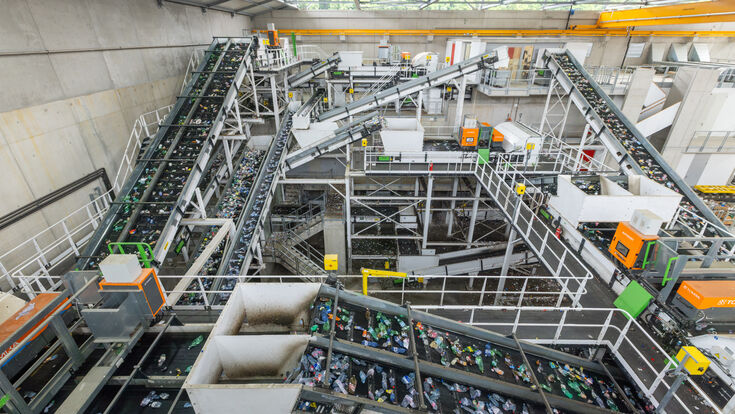Plastic Waste : Bollegraaf helps AGIR AG to achieve PET bottle-to-bottle recycling in Switzerland

Bollegraaf Group, a recognized leader and innovator in recycling technologies, has recently completed the construction of the largest PET sorting facility in the Swiss market for AGIR AG. The primary goal of this advanced facility is to sort PET bottles into food and non-food grade fractions. Equipped with cutting-edge sorting technologies and a high degree of automation, the plant represents a significant milestone in the country’s recycling infrastructure. This project reflects the increasing demands of the Swiss plastics market and is a natural step in reaching the country’s sustainability goals.
In Switzerland, PET bottle collection is centrally organized by PET-Recycling Schweiz, and AGIR serves as a processing partner. Located in Zurich near the city center, AGIR’s facility is ideally positioned to support the logistics of the recycling association. Traditionally focused on gravel extraction and concrete production, AGIR’s entry into plastic recycling marks a significant diversification of its operations.
Switzerland does not have a deposit system in place. However, Switzerland has a functioning (entirely voluntary) PET recycling system* and the country’s PET recycling rate has an incredible percentage of 83%. “We receive PET bottles from supermarkets and other collection points, where they are returned voluntarily and free of charge by consumers. These bottles are then collected, compressed, or sorted into loose bags and delivered to our plant,” explains Benedikt Bader, Operations Manager and Head of PET Recycling at AGIR AG.
The facility’s sorting process also includes color separation of PET bottles, with a key requirement being that bottles remain undamaged during sorting—an important factor for manufacturers aiming to reuse bottles in food-grade applications.
Currently, AGIR delivers material to two key locations in Switzerland where PET is further processed. “Our goal is to maintain a closed-loop system in Switzerland ensuring that each bottle is returned to the market as a new recycled PET product,” Bader adds.
With a growing population, Switzerland is expected to produce increasing volumes of PET waste. AGIR is well-positioned to meet this demand. Although the plant was initially designed for a single-shift capacity of 40 tons, it has achieved a peak performance of up to 70 tons per shift. “With two or three shifts, we could process half to three-quarters of Swiss PET volume through our facility,” notes Benedikt Bader.
Bollegraaf had best price-performance ratio
Bollegraaf’s logistics and plant layout design stood out among six competitors, delivering a highly efficient solution with significantly fewer conveyor belts. Their clear planning and execution played an important role in the project’s success. According to AGIR, the price-performance ratio was the best from the side of Bollegraaf.
Future scalability was one of the key objectives of the project. As the PET market evolves, particularly with the anticipated shift of milk bottles from HDPE to PET, the flexibility that Bollegraaf incorporated into the design, allows for easy adaptation to handle new material fractions.
“We still have capacity available,” Bader concludes. “This says a lot about the quality and foresight of Bollegraaf’s work. We are confident that, in the future, we will be able to increase our throughput and make an even greater contribution to PET recycling here in Switzerland.”
In cooperation with Bollegraaf.


